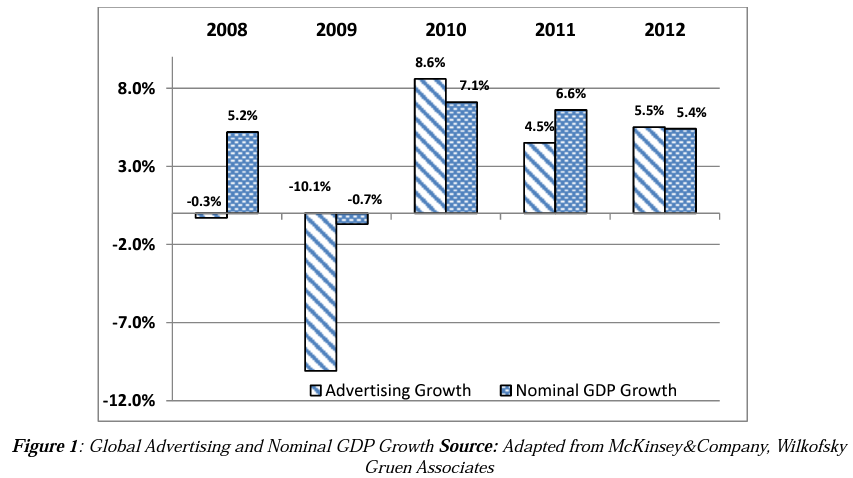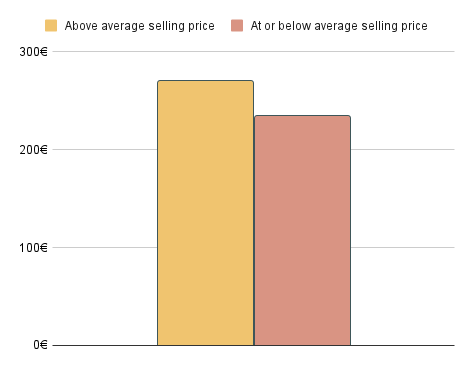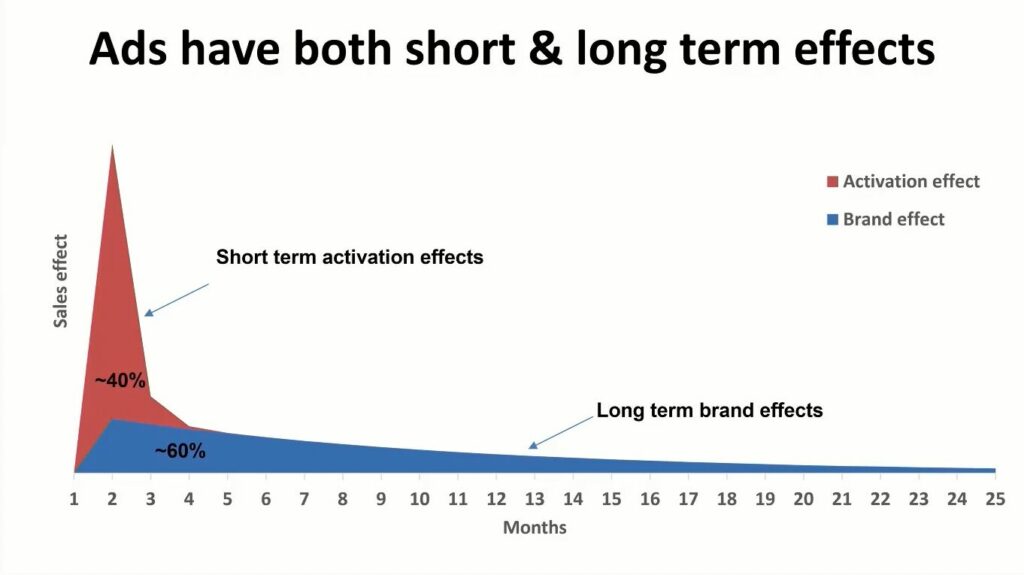2023 will bring both uncertainty and volatility. While this environment won’t be easy to navigate, we believe it will also create opportunities for profitable growth.
Here are three such opportunities.
I. Digital ad costs are decreasing for the first time in over a decade
In times of economic uncertainty, marketing is often the first thing that companies cut from their budgets. There are many examples in history.
After the 2008 financial crisis, global GDP decreased by 0.7%. But global advertising decreased by 10% or 14X more!

When advertisers spend less money, advertising costs come down. Average click prices on Google and Meta (Facebook/Instagram) are now decreasing year-over-year.

Companies that keep advertising in 2023 may see less competition and lower costs.
II. Building brand equity will become easier and more effective
Marketing generates revenue in two ways: through short-term sales activation and long-term brand building.
Sales activation is easier to measure and viewed as less risky. So companies often focus on the short-term, even when it comes at the expense of long-term performance.
Discounting is a good example. It often attracts less loyal and therefore less profitable customers. But companies can become addicted to the short-term revenue boosts.

By focusing only on sales activition, you never give your customers reason to prefer your brand over the competition. Without brand equity, you can become dependent on discounting in a downward spiral of reduced profit margins.
Short-term thinking can also lead to poor decision-making. A recent study of 3,500 Meta campaigns found that long-term effects account for 60% of total ROI. Companies that don’t measure and consider long-term effects, will mistakenly kill campaigns that are actually profitable.

We predict most companies will focus even more on short-term marketing in 2023 and that marketing spending and efforts will be concentrated toward demand capture (e.g. search engine marketing).
This will create large opportunities for companies that keep investing in branding. They can choose media channels with larger reach and lower costs, while competitors fight for the attention of a decreasing number of high-intent buyers. They will also have an easier time standing out from the crowd and increasing mindshare.
Companies that focus on building brand equity in 2023 may see less competition and lower costs.
III. Qualitative customer insights will unlock opportunities for demand generation
Digital advertising changed how marketing is measured because it allowed for accurate attribution. By using technologies such as cookies, companies were able to start tracking what people did after seeing or clicking on an ad.
This gave rise to the performance marketing industry, which now generates hundreds of billions in global revenue per year.
Attribution is useful, but it has its limitations. One of the major issues is that attribution often doesn’t account for long-term effects. Even advanced attribution models tend to miss the very first touchpoint and put too much weight on the last touchpoint. This is especially true for long and complex buying journeys.

But because attribution is easy and precise, many companies will continue using it as their only source of truth. As a result, they will miss out on many profitable opportunities for demand generation, while spending a disproportionate amount of time and money on demand capture.
Companies that supplement attribution with qualitative customer insights will have a more complete picture and can make better decisions. Qualitative insights can help uncover impactful touchpoints that the attribution software fails to capture. This can include actions like podcasts, e-books, blog posts, webinars, and in-person events.
All companies can systematically collect these kinds of qualitative insights through e.g. web forms, post-purchase surveys, or customer interviews.
Companies that include qualitative customer insights in their measurement may see less competition and lower costs.
Let’s create profitable growth!
In economically uncertain times, marketing needs to generate a profit. That’s why you need a partner who understands your business. Someone who can create real growth by optimizing all aspects of your marketing.
Since 2009 we’ve helped hundreds of companies through a business-first approach to marketing. Are you our next growth story?
Contact us to learn more!

